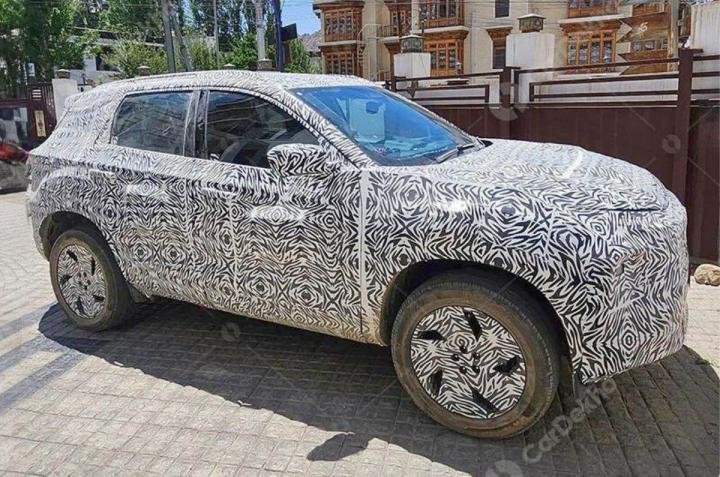Tata Motors is now the nation’s best-selling EV brand thanks to models including the Tiago EV, Punch EV, and Nexon EV. With the heightened rivalry, Tata intends to introduce several new items. Harrier EV is one of these, and it will debut within the current fiscal year. New alloys are visible on the Tata Harrier EV in the most recent spy photos taken in Ladakh. When the Harrier EV Concept made its debut at the 2023 Auto Expo last year, it was sporting the same alloys. The Harrier test mule has never been seen with these alloys on before.

Tata Harrier EV Specifications
Tata’s born-electric acti.ev architecture forms the basis of the Harrier EV. The Punch EV is already using this. The anticipated 60-kWh battery pack for the Harrier EV will provide a range of about 500 kilometres. The 2.0-liter diesel engine that powers the contemporary ICE model. It produces 350 Nm and 170 PS. There are two options for transmissions: 6-speed MT and 6-speed AT. According to reports, Tata is also developing a fuel version of the Harrier. Acti.ev has improved energy density by 10% thanks to its optimised battery pack design.
It is possible to get a range of 300 to 600 kilometres. AC chargers ranging in power from 7.2kW to 11kW are supported for charging. It takes about ten minutes to load 100 km with a 150 kW DC fast charger. The acti.ev pure EV architecture from Tata offers compatibility for both AWD with a dual-motor system and FWD and RWD with a single-motor setup. It’s expected that the Harrier EV will come with an AWD option.
Recently, a test mule was sighted, and it had an electric motor driving the back wheels. It is plausible that the test mule in question was an AWD model. The Harrier EV’s capabilities can be greatly increased with an AWD configuration. Business-wise, it is also significant because competitors like the future XUV700 EV (XUV.e8) are expected to include AWD as well.
Although ADAS is currently present in the ICE Harrier, the Harrier EV may include a few new functions. Harrier EV will employ the acti.ev architecture, which offers improved processing power and ADAS Level 2 capabilities. Additionally, it is made to enable ADAS L2+, which guarantees improved navigation and safety. 5G is supported by the acti.ev platform, which will guarantee lag-free connectivity. Features like Vehicle to Vehicle Charging (V2V) and Vehicle to Load (V2L) will be available for the Harrier EV.
Tata Motors is aiming to increase the range of its charging infrastructure in addition to launching new vehicles. This will be essential to enhancing the Tata EV customer experience overall. Tata Motors hopes to install over 100,000 charging stations by the end of this decade. A further area of effort is to increase the quantity of showrooms dedicated to EVs. In the coming years, almost fifty showrooms dedicated to EVs will emerge. These programs will help Tata’s planned electric vehicles, including the Avinya, Sierra, and Curvv models.